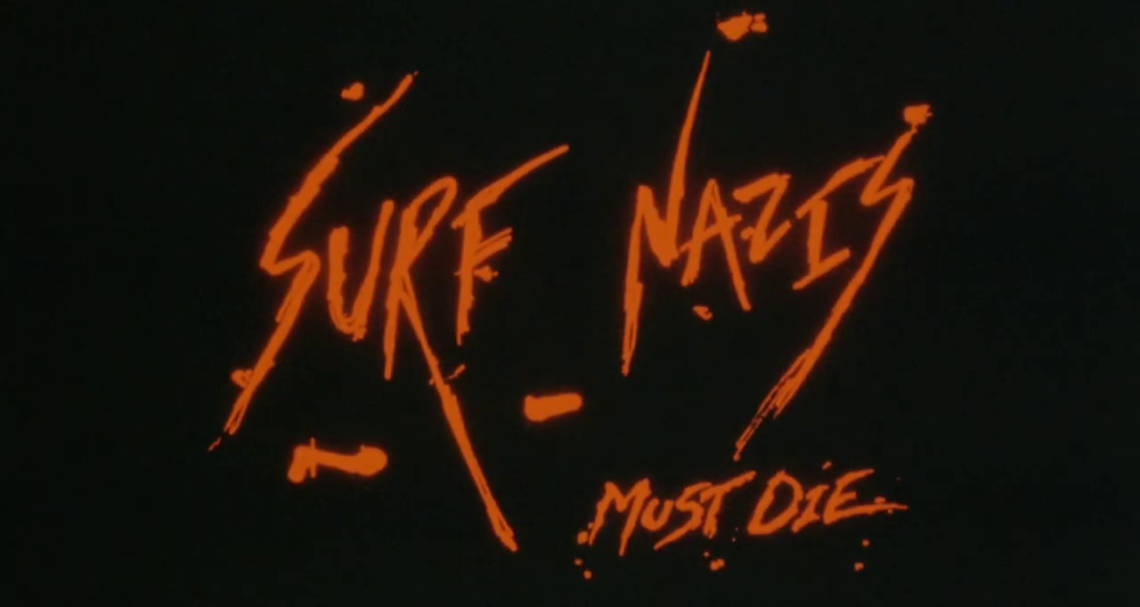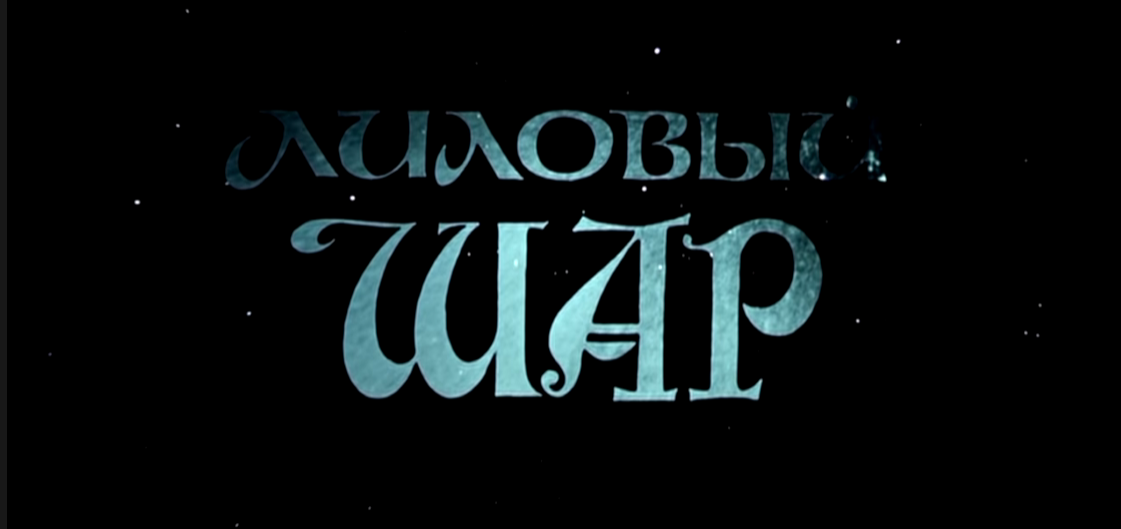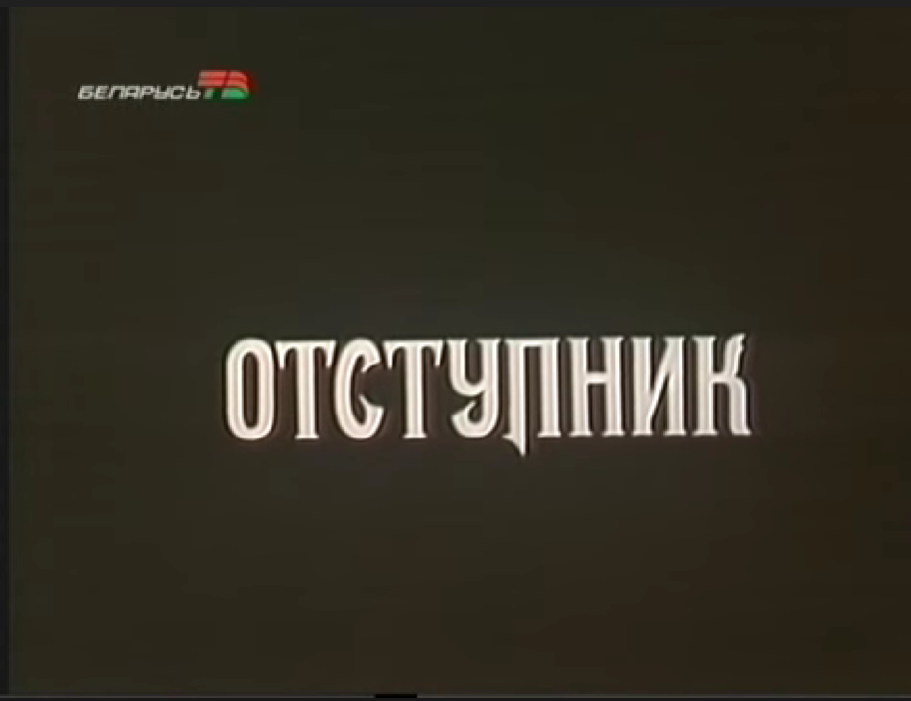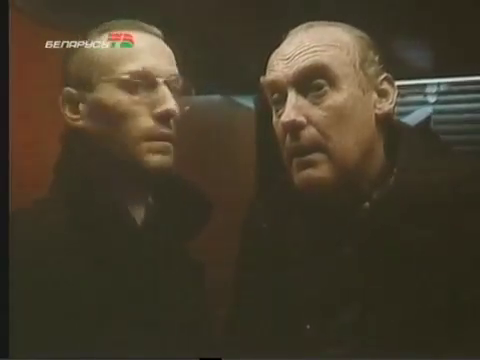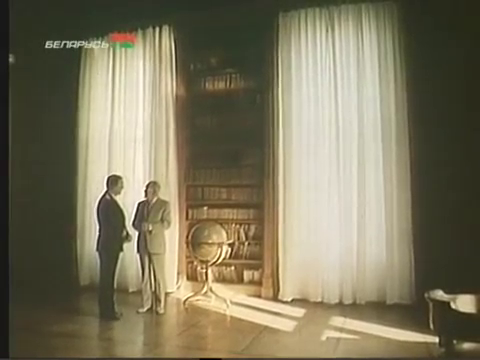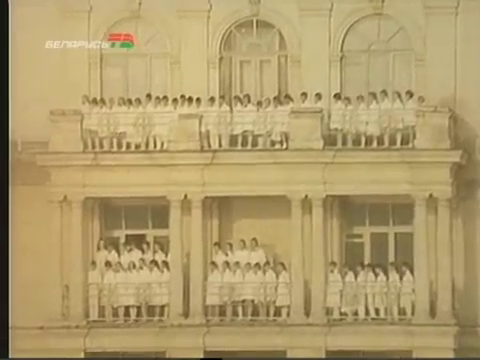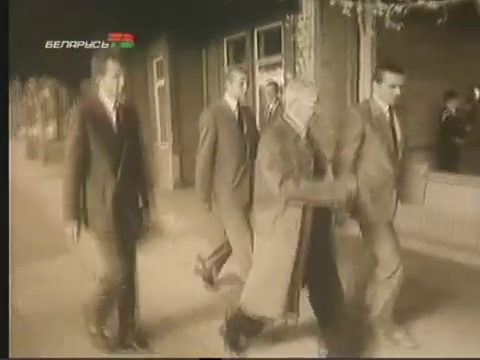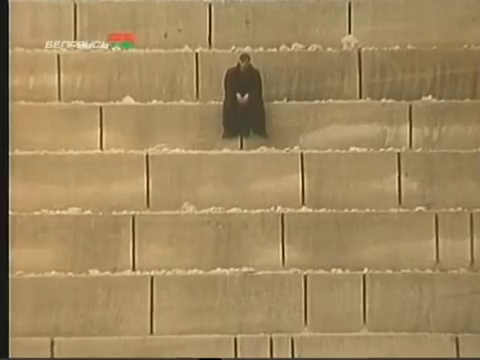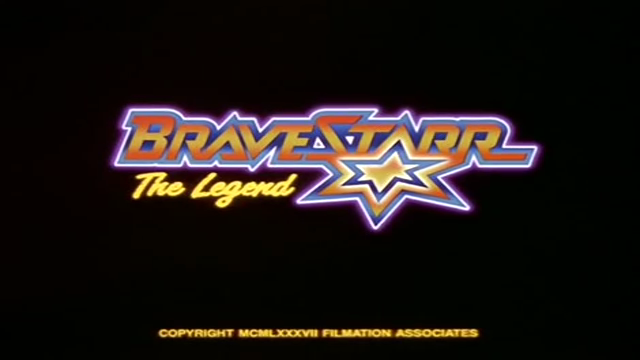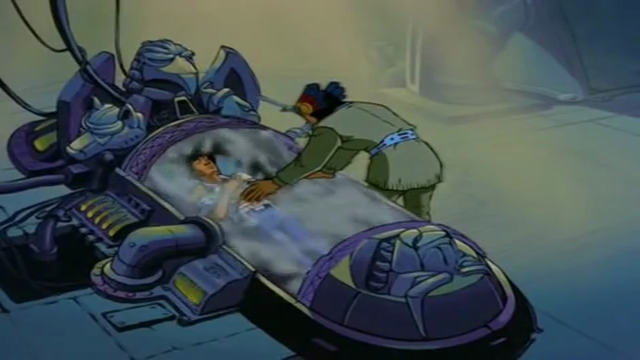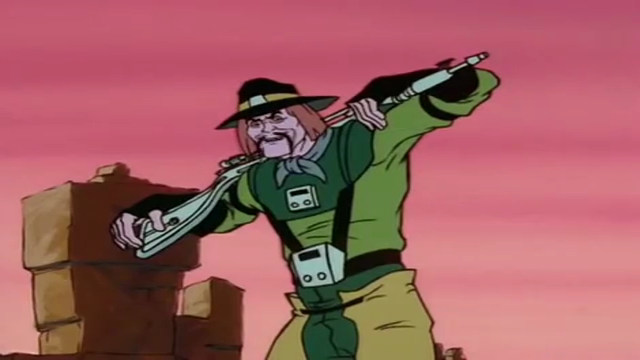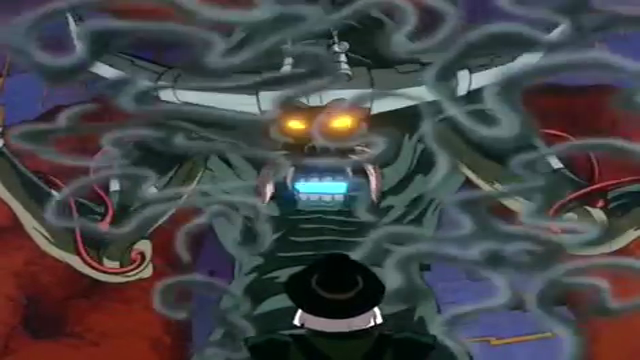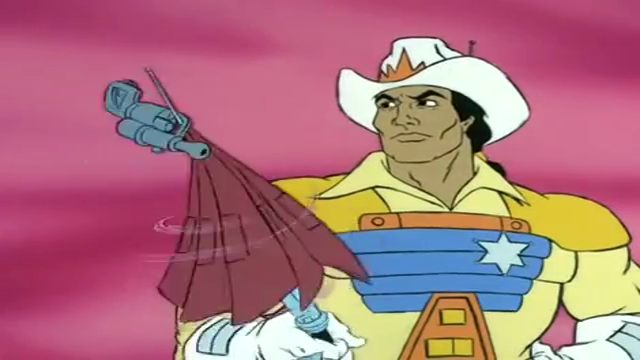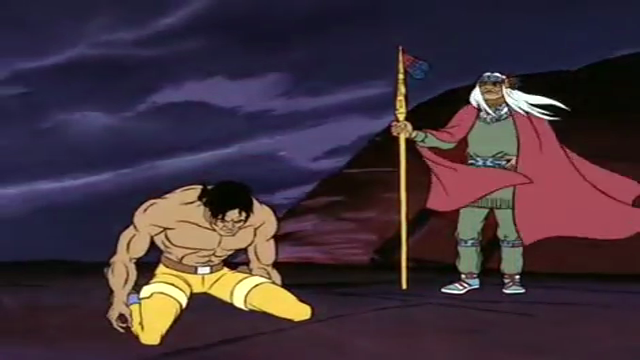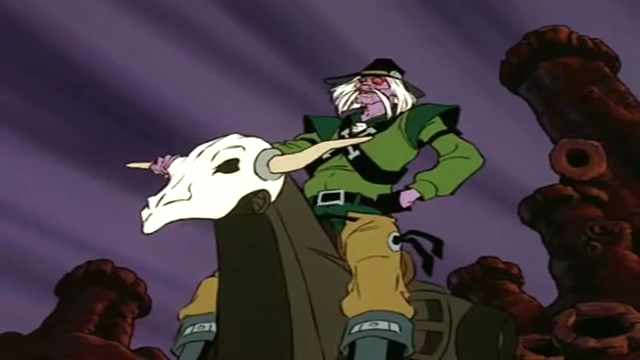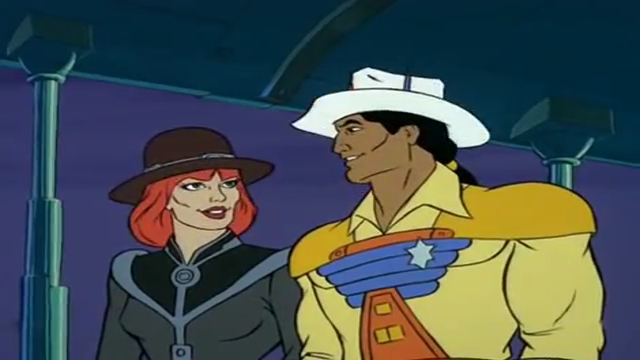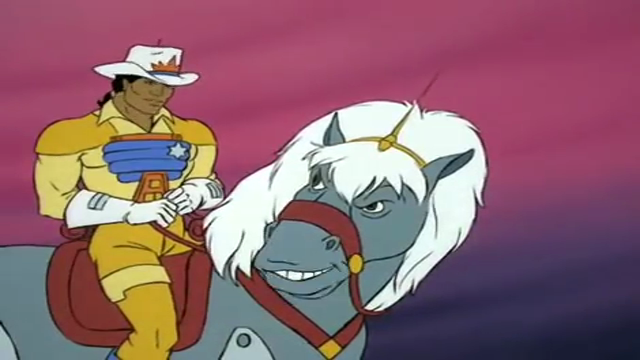-
#584 – Surf Nazis Must Die (1987)
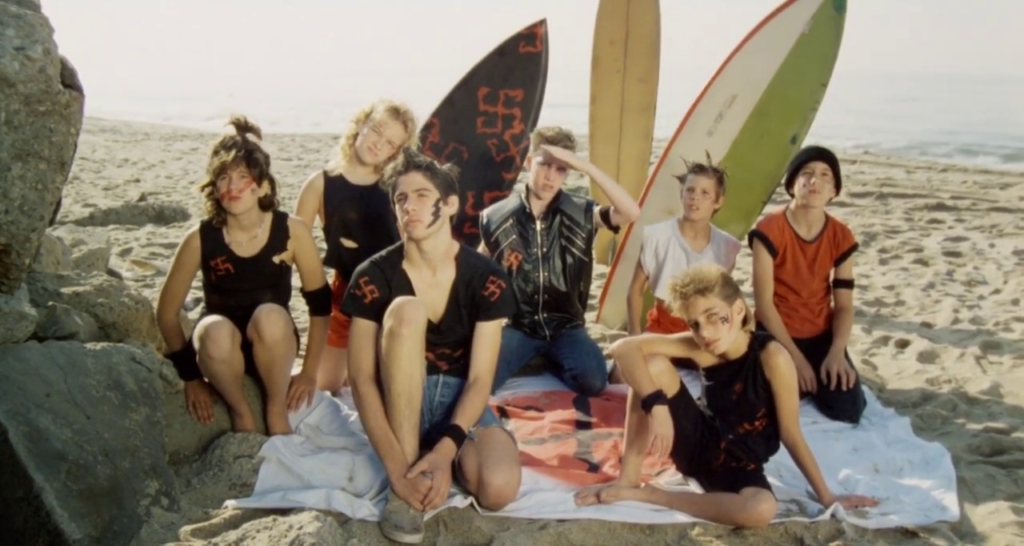

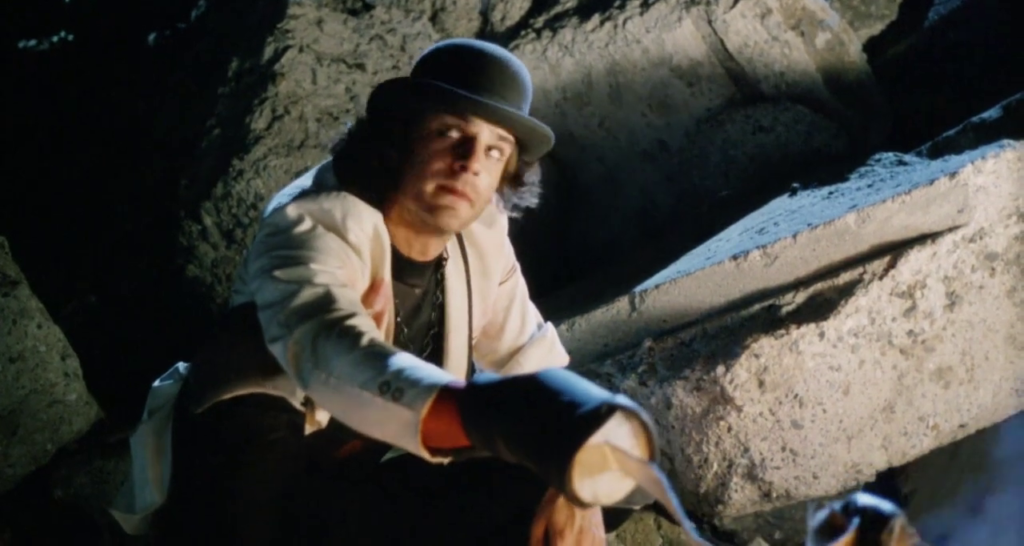

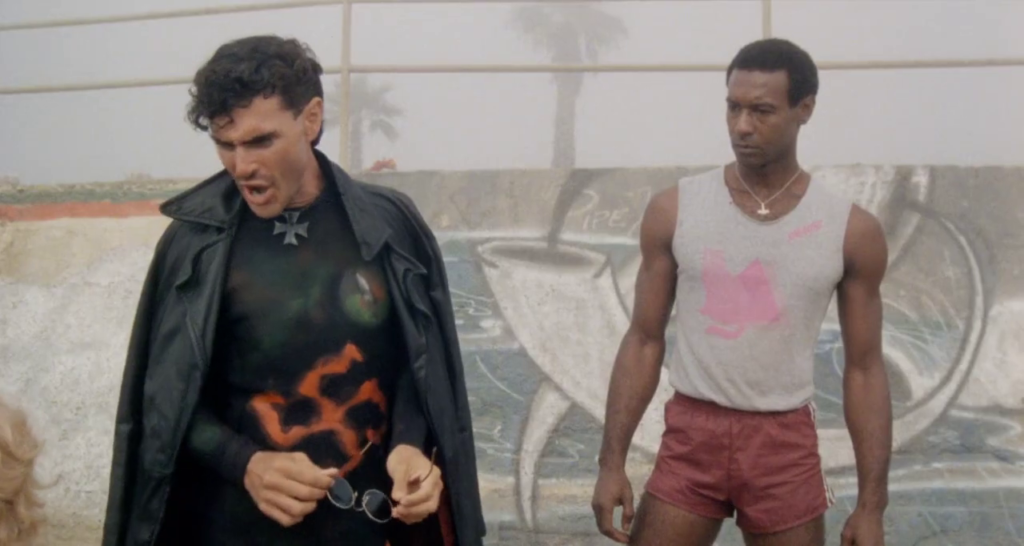

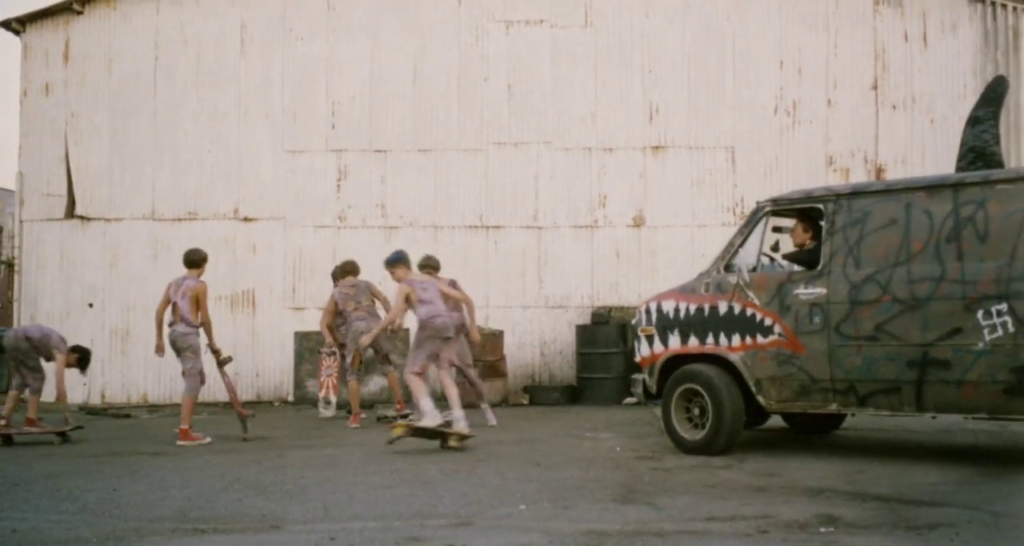
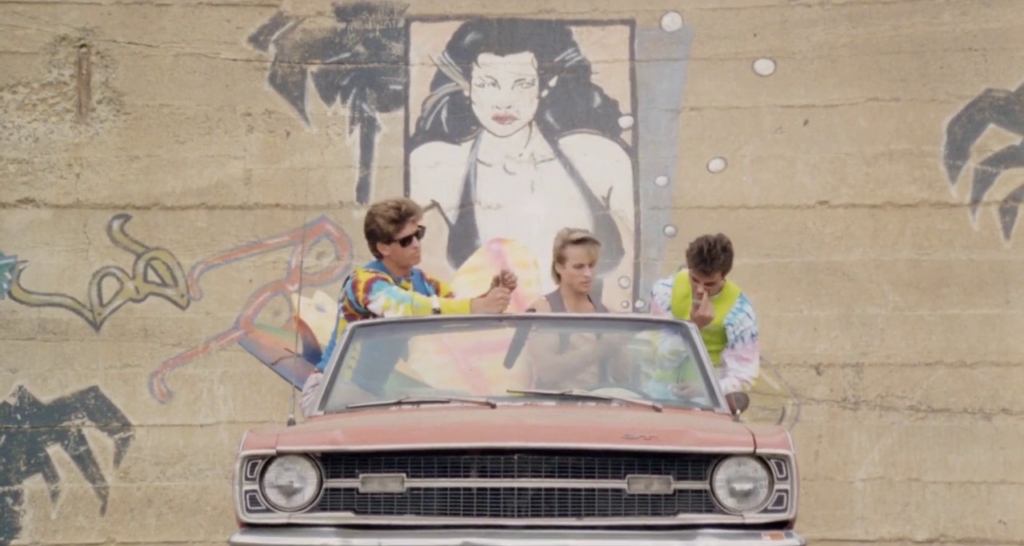
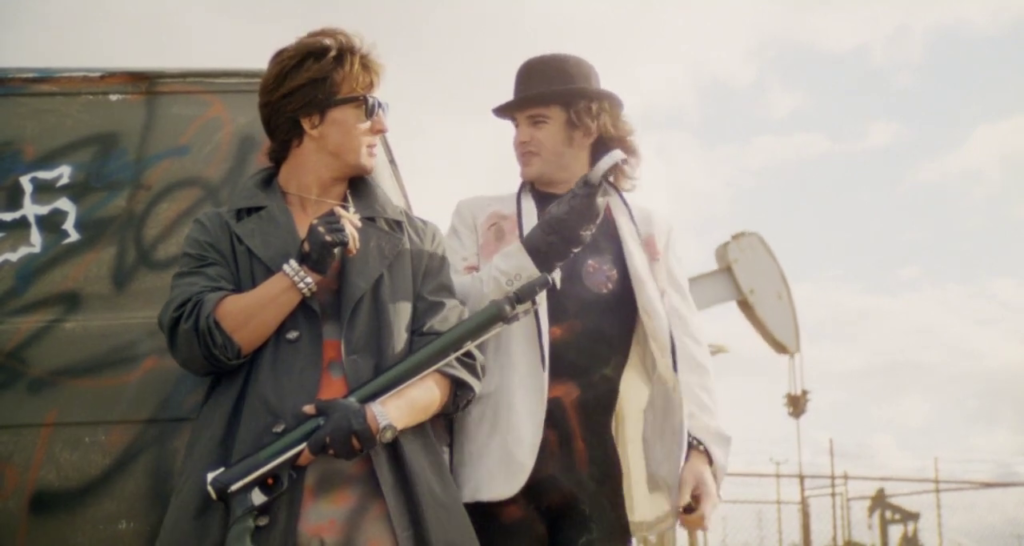

Surf Nazis Must Die (1987)
Film review #584
Director: Peter George
SYNOPSIS: After a devastating earthquake reduces Los Angeles to rubble, the beaches become the battlefield for a number of gangs who want to rule the waves. After a group of neo-Nazis seize the beach, and a young man is killed, his Mother decides to take revenge on the Nazis that murdered him…
THOUGHTS/ANALYSIS: Surf Nazis Must Die is a 1987 post-apocalyptic film. The film’s title might sound completely off the wall and nonsensical, but actually refers to the neo-Nazis that existed around surfer culture in Los Angeles from the 1960s onwards. The film is set in a post-apocalyptic version of L.A. after a huge earthquake reduces the city to ruin…well, probably. We don’t really see the city in ruins to establish the location or context, and there’s also no real indication if just the city is in this post-apocalyptic state of lawlessness, or it is the wider world. Anyway, in this state of chaos, various surfer gangs battle it out for control of the beaches. While the film embraces some more outlandish elements that you would expect from the title, including the various surfer gangs of Nazis, ninjas, and the like, the film on the whole is fairly tame and subsequently, rather dull. There’s barely any other story other than Nazis just terrorising people, and every scene in which something happens is followed by long shots of people surfing, which by the time you return to a scene with dialogue or plot, you can’t really follow what happens from one scene to the next. There’s a story concerning some drug deals, a kid hanging around the Nazis to his Mother’s disapproval, and a Mother taking revenge on the Nazis for the murder of her son, but none of these elements really add up to anything, or come together in any way.
Despite the silly concept, there is an element of the film taking some things seriously: the Nazis radicalising youths, the preaching of their purity yet clearly engaging in deviancy; there’s some effort to write the bad guys as the bad guys , and to show their hypocrisy. Don’t get me wrong: this is not done in an overly impressive or interesting way, but it is there. probably the most memorable character and plot element is “Mama,” a middle-aged woman who is put into a care home after the earthquake, but always manages to sneak out to cause trouble, and her mission of vengeance which becomes the focus of the film when her son is murdered by the Nazis, is at least somewhat interesting. Not only is her straight-up approach to the Nazis being to call them out and hunt them down refreshing (because we don’t really need to have nuance in dealing with Nazis, I thin the film is trying to say), but having a middle-aged black woman as the main character is such a rare occurrence it almost makes the film feel fresh. Again, there’s still not much substance, but the no-nonsense approach the film takes is somewhat fun while it lasts.
Overall, Surf Nazis Must Die fails to live up to its bizarre name: it’s mostly dull viewing with barely any plot, and random footage of surfing that serves no purpose other than to extend the runtime breaks the film up into isolated scenes that serve no overall purpose. There’s some attempt to offer something unique with the “revenge” story arc, and dealing with Nazis in a straightforward way, but other than that, it’s a dull, low-budget flick that offers nothing really exciting or interesting.
-
#579 – Miami Connection (1987)
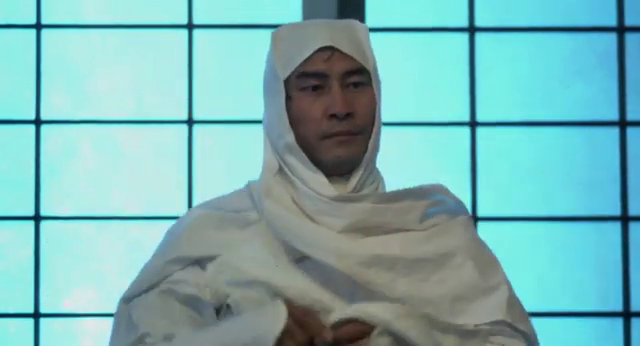
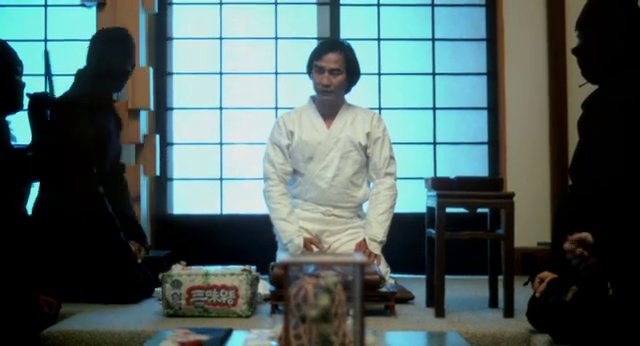
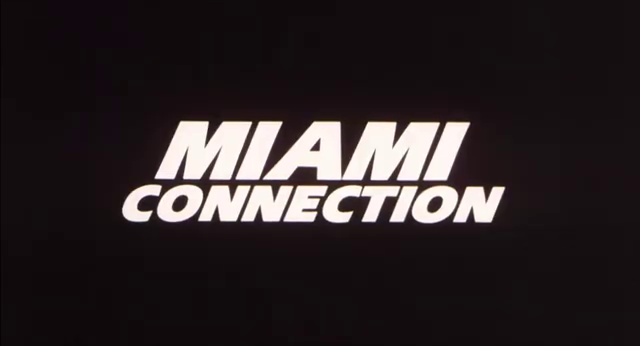
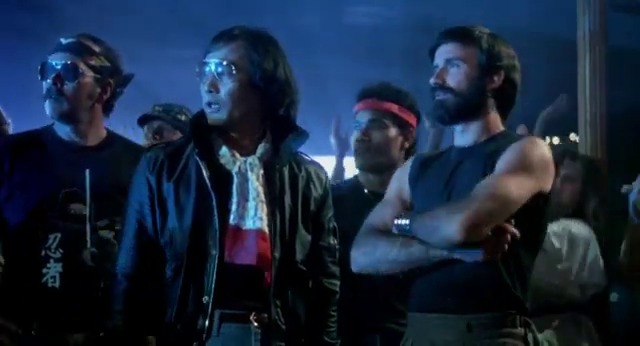
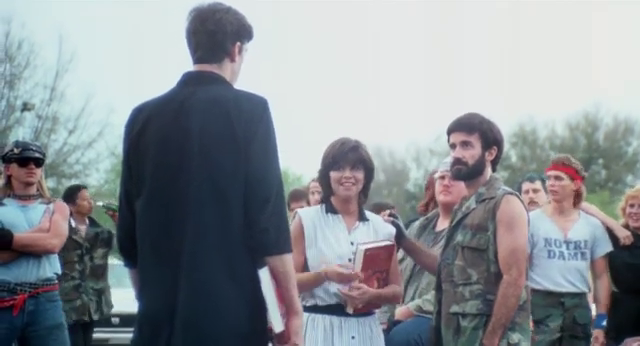
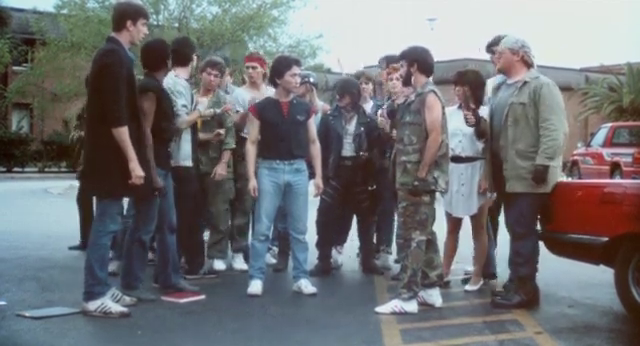
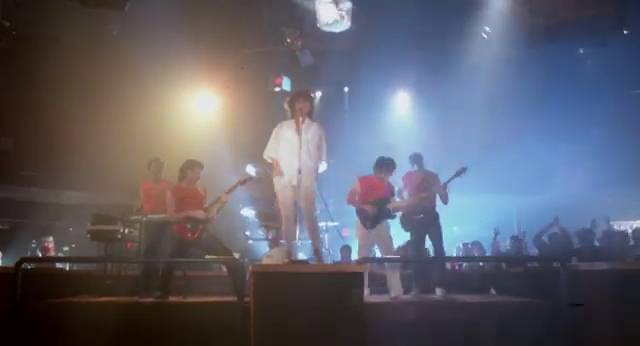
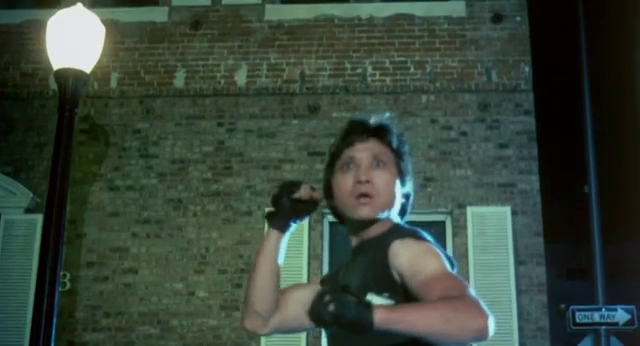
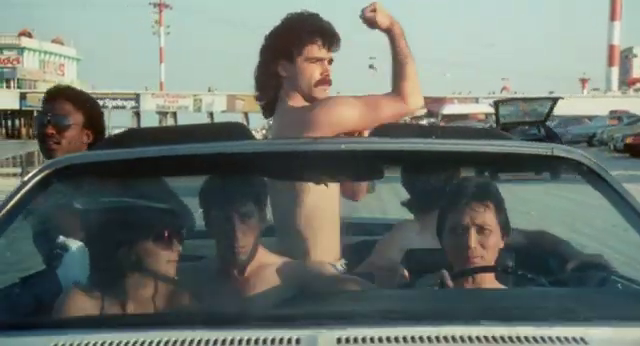

Miami Connection (1987)
Film review #579
Director: Richard Park, Y.K. Kim
SYNOPSIS: A drug deal in Miami is intercepted by a gang of motorcycle riding ninjas. Meanwhile, the Sister of one of the ninjas has joined the band “Dragon Soul,” and her brother disapproves, leading to a lot of martial arts fighting between just about everyone on the streets of Miami.
THOUGHTS/ANALYSIS: Miami Connection is a 1987 martial arts film. The film opens up with a drug deal being intercepted by a gang of motorcycle riding ninjas: just in case you’re wondering what kind of film you’re about to experience. The plot of the film is no less bizarre, as it revolves around a band named Dragon Soul, whose members are orphans and best friends, and learn taekwondo with their mentor and fellow bandmember Mark, played by Y.K. Kim, who co-directed, produced, wrote, and nearly bankrupted himself to get this film made. There isn’t really much of an overarching story here, other than everyone in Miami just wants to pick a fight with the band for one reason or another, so they usually have to fight their way out. There’s a plot concerning one of the bandmembers finding his biological Father as well, but nothing really leads to anything or goes anywhere. There’s a message about the band wanting to travel over the world spreading peace and love or something, but that seems rather drowned out by the mass fighting on the streets they get involved in every ten minutes or so.
Despite all the woeful dialogue, bad acting, and lack of any real story, there is something very charming and enjoyable about this film: its cheesy and nonsensical, but it’s always entertaining as you never quite know what it is going to attempt next. It is a “so bad it’s good” film, and earnestly one of the best. You can tell Kim was deeply passionate about making this film and spreading a message about Taekwondo and brotherhood, but he had absolutely no experience making films in any capacity, and the fact that he had complete control over this film shows. There’s nothing mean-spirited or any sense of a cash-grab, and the good intentions of the filmmaker shine through.
I think it’s safe to say you won’t see anything else like Miami Connection: it exists in its own universe of 80’s martial arts action and music that, while makes no sense and lacks any kind of filmmaking knowledge, still manages to make a cinematic event that’s still authentic and chaotic enough to make it entertaining, and worthwhile to watch. It’s really not the kind of film you can sum up and review, and perhaps that makes it a bit of essential cinema.
-
#556 – Superman (1987)
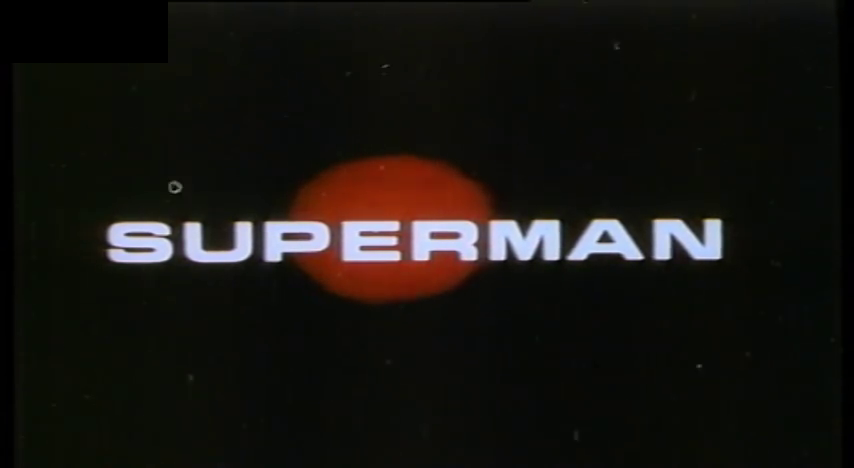
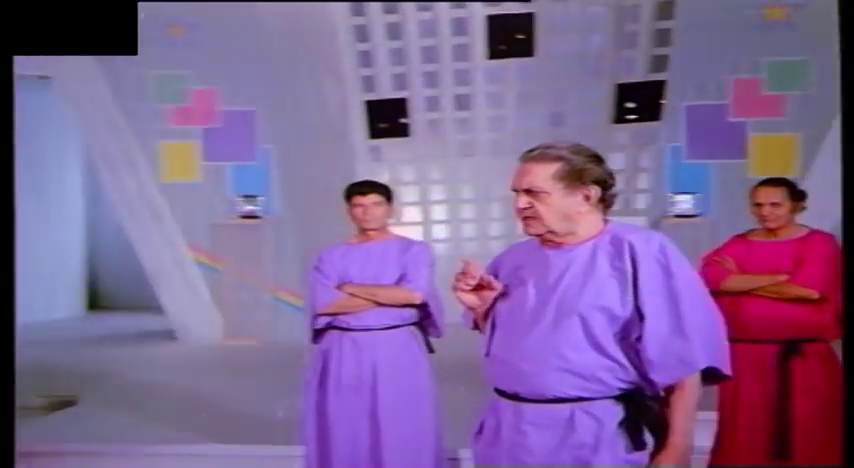
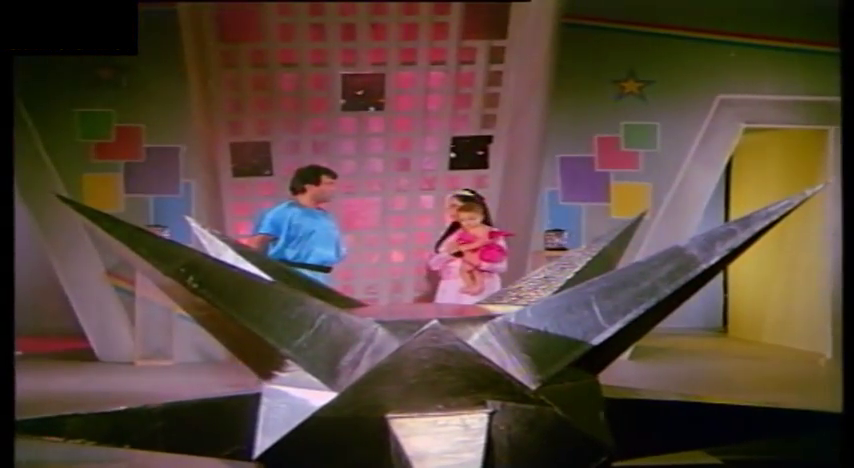
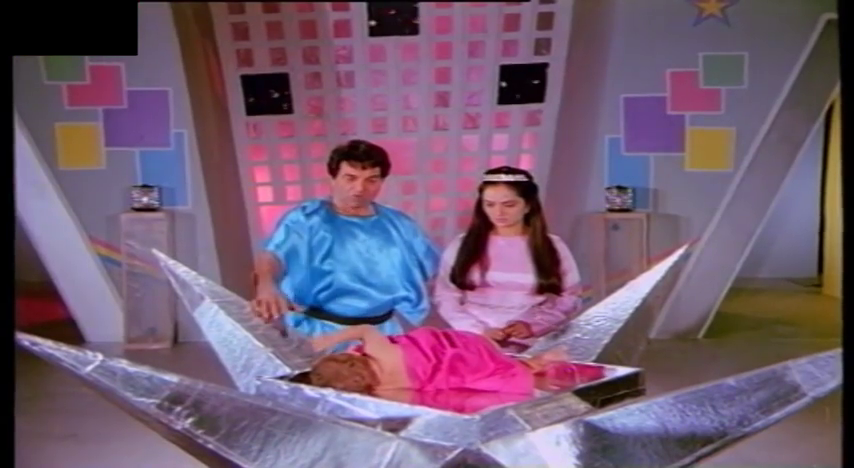
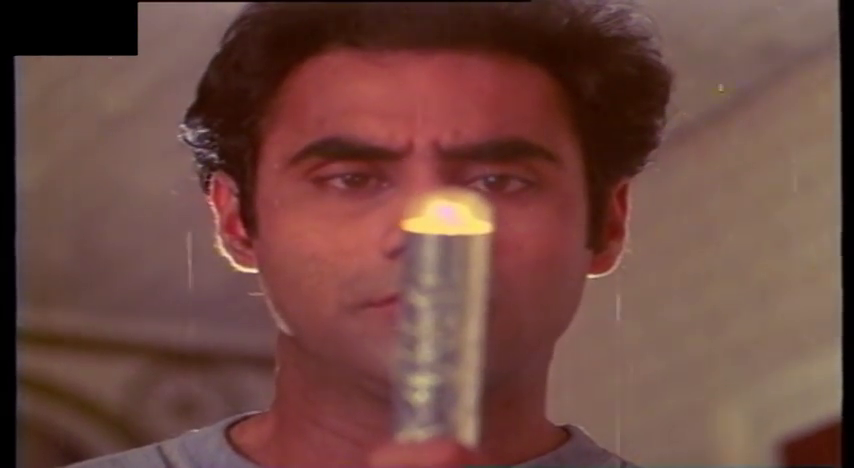
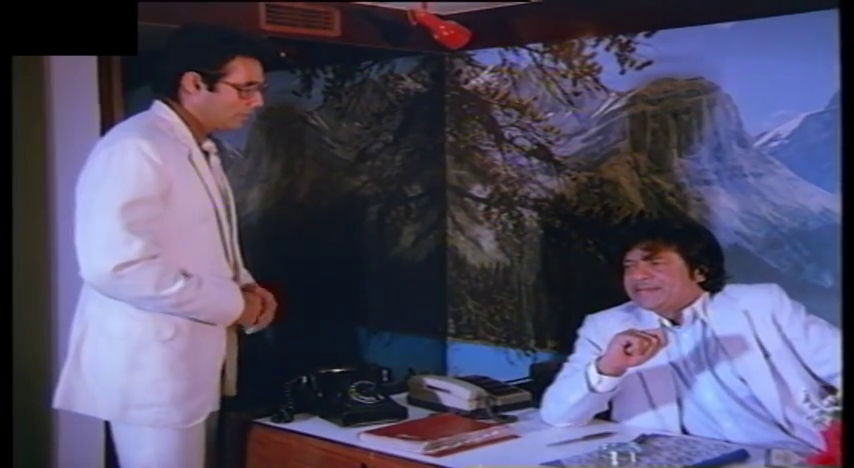

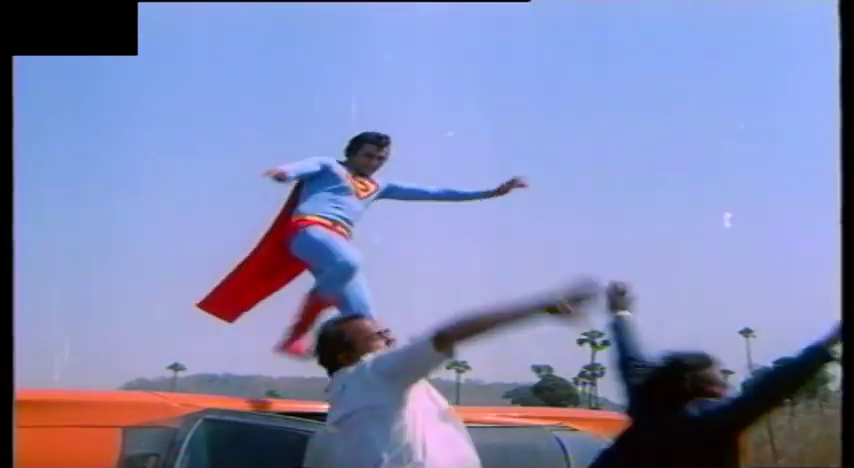
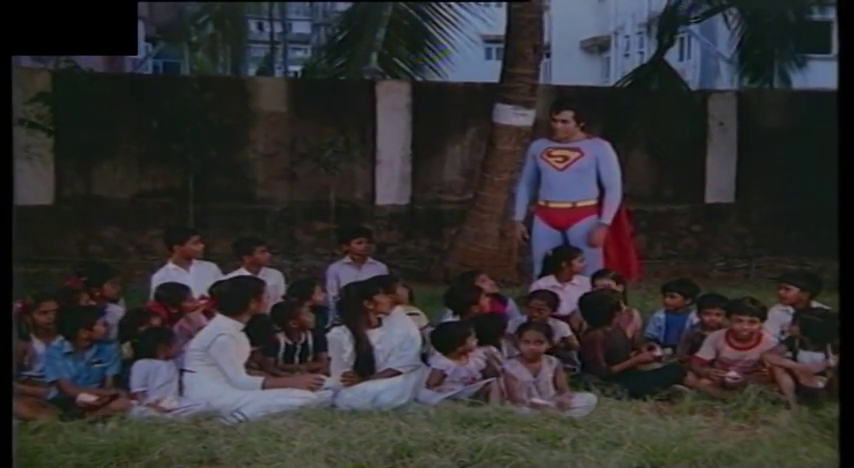
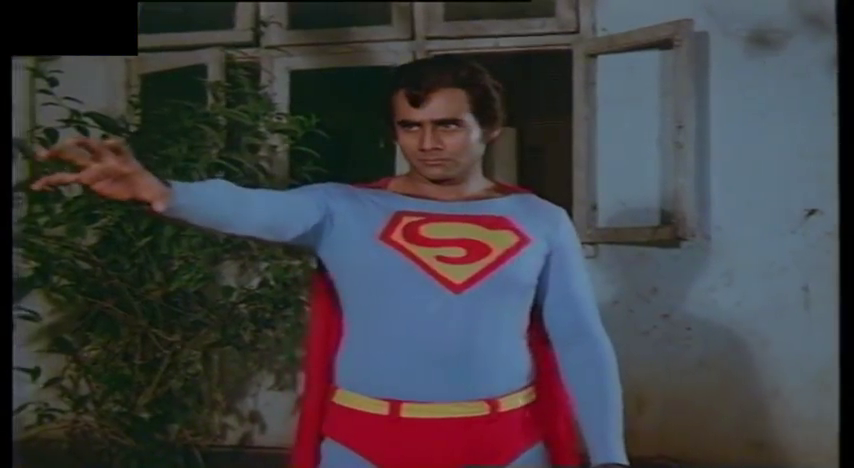
Superman (1987)
Film review #556
Director: B. Gupta
SYNOPSIS: As the planet Krypton is about to be destroyed, the parents of a baby boy send him to Earth to escape the destruction. He lands in India and is raised by a couple who soon realise he has superhuman powers, but keep his powers a secret, naming him Shekhar. As an adult, he travels to the city in search of his childhood, Gita, while his old rival for Gita’s love, Verma, is a tycoon and super-villain who aims to become rich by causing a series of natural disasters across India and buying up the land cheap…
THOUGHTS/ANALYSIS: Superman is a 1987 Indian film and an unlicensed adaptation of the comic book superhero. This is not the first adaptation into Indian cinema either, with similar (unlicensed adaptations) in 1960 and 1980. The film’s story follows the typical Superman lore fairly accurately, as in the intro, we see the planet Krypton about to be destroyed, and a young baby boy being sent to earth as the only survivor. However, rather than landing in the rural U.S. as is canon, he instead lands in India, where a young couple find him and give him the name Shekhar. They soon learn he has superhuman powers, but tell him to keep them secret. When Shekhar is grown up, he heads to the city to find his childhood Gita, now working as a reporter (the “Lois Lane” of this version), while his old rival for Gita’s affections, Verma, is now a crime-lord who attempts to get rich by creating a series of natural disasters across India in order to buy the land up cheap (being the “Lex Luthor” of this film). The story, apart from being set in India, fits the established story quite well…a little too well, as it is essentially copying the 1978 Superman film point-for-point. The capsule which takes Superman to earth as a child is the exact shape as the one from the original film, but obviously made from silver foil rather than expensive (for the time) CG. Also, it straight up steals footage from the 1978 film’s ending, where Superman flies around the Earth so fast he turns back time, alongside using the John Williams theme is definitely has no permission for. As such, we can’t give the film too much credit for it’s story if it’s just taking it from an other successful film, but it follows the beats of the film fairly well. It also adds in some usual musical and dancing numbers, but these feel quite underwhelming compared to other films I’ve seen; almost like they were focused on making a Superman clone and had to add in musical numbers because that’s what Indian cinema does. Alongside this, they also use Michael Jackson’s “Beat it” in one dance scene, which again I’m pretty sure they did not have the rights to do so.
As mentioned, the characters from the Superman franchise are all recreated here quite faithfully, although being based in India rather than the U.S. Superman/Shekhar has Clark Kent’s naivety and Superman’s bravery, Gita has Lois Lane’s dogged determination, and Verma has Lex Luthor’s evil streak. We see the planet Krypton at the start of the film, adorned with a cheap set full of random coloured blocks, and there is also the fortress of solitude, where Superman goes to learn about his home planet, all loving recreated with nowhere near the budget of it’s Hollywood counterpart. Superman seems to have all of his powers such as super strength and flight, but also has telekinesis for some reason too, shown in a scene where he unwraps food and sets a table with his mind. The film has a decent mix of humour, action and drama, so it’s not uninteresting, although being released nearly ten years after the very successful film it is copying, I’m not sure if the audience would have already seen the original film subtitled or dubbed by that time. Nevertheless, I suppose it’s a pretty good adaptation of Superman, only because it is ripping off a good Superman film beat for beat. Otherwise, the obligatory dance and musical numbers are poor and uninspiring, and a bloated runtime of over two hours to incorporate more typical drama elements weighs the film down. The choreography, in both the musical numbers and the fight scenes is pretty dire, as you can obviously tell that none of the punches are connecting to anyone. Despite all this, it is still one of those films you really need to see to believe, so if your curiosity is piqued, then maybe you’d better put two hours aside to savour this cinematic wild ride.
-
#501 – Lilac Ball (1987)
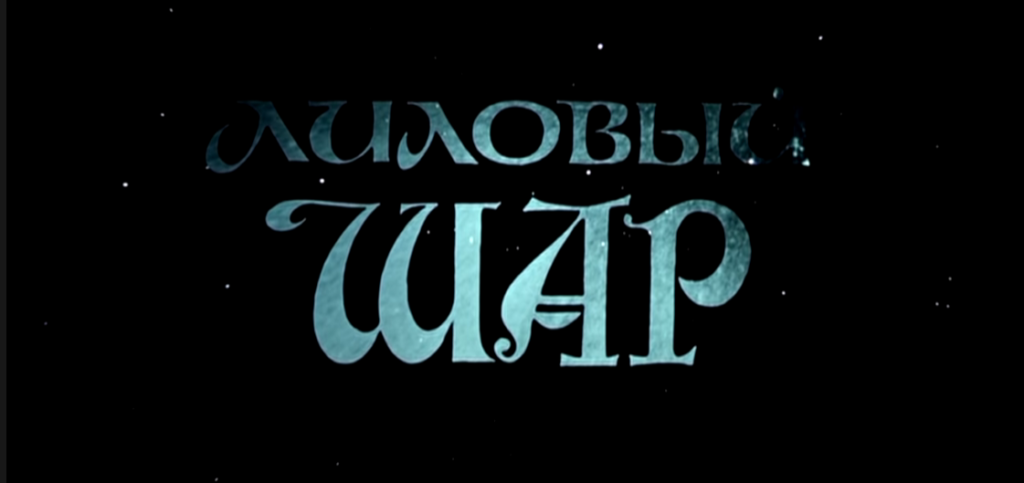
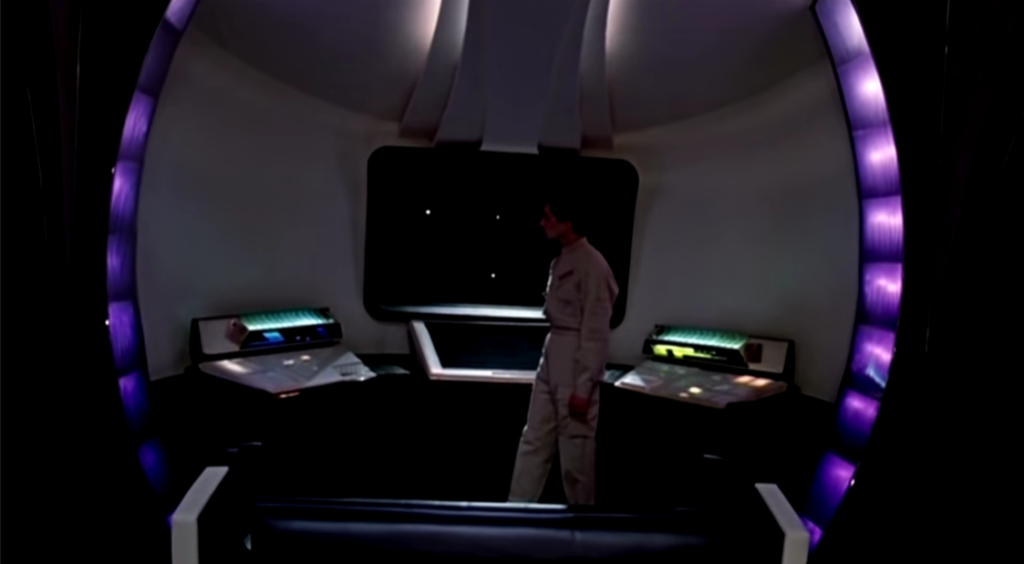
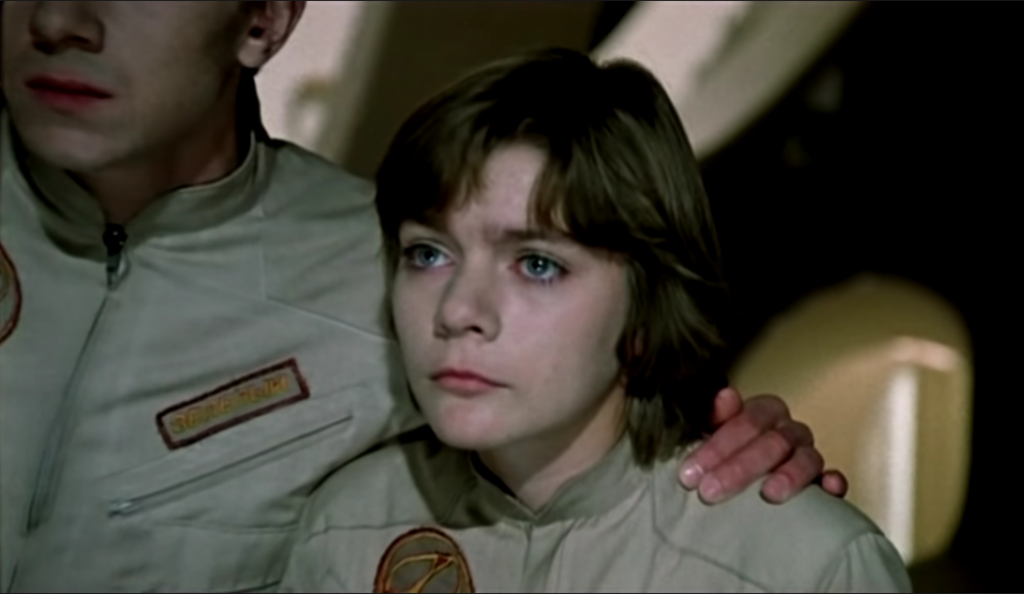
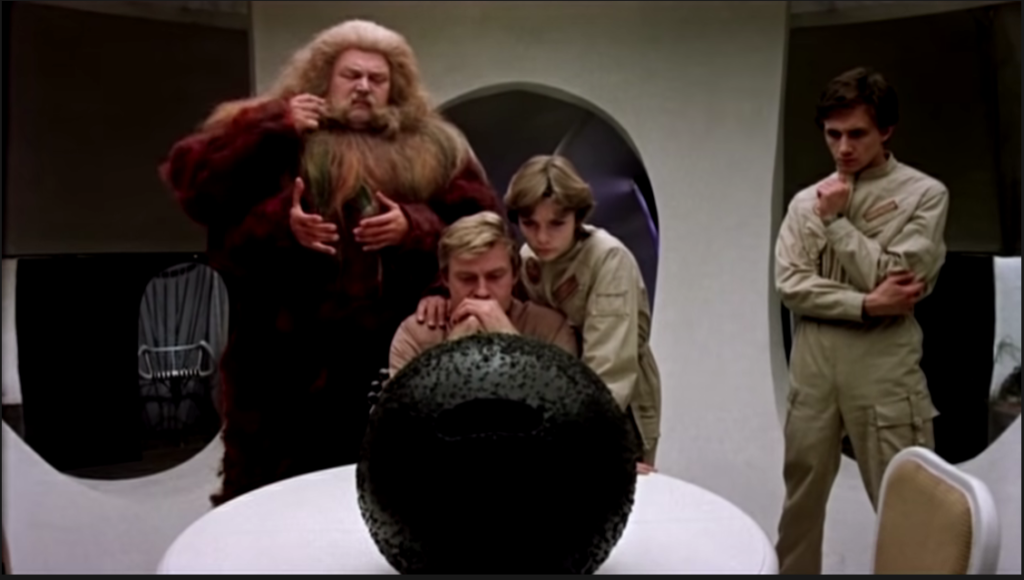
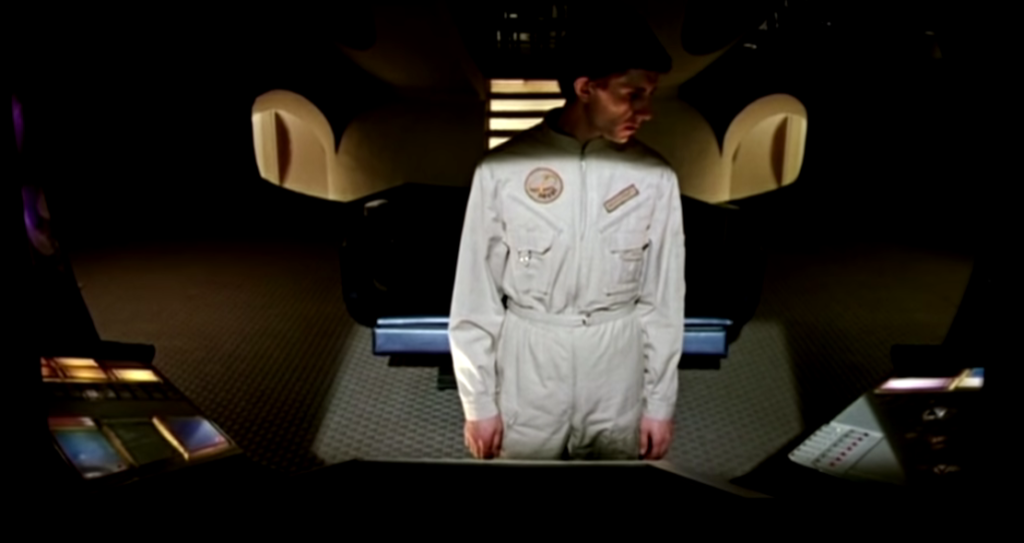
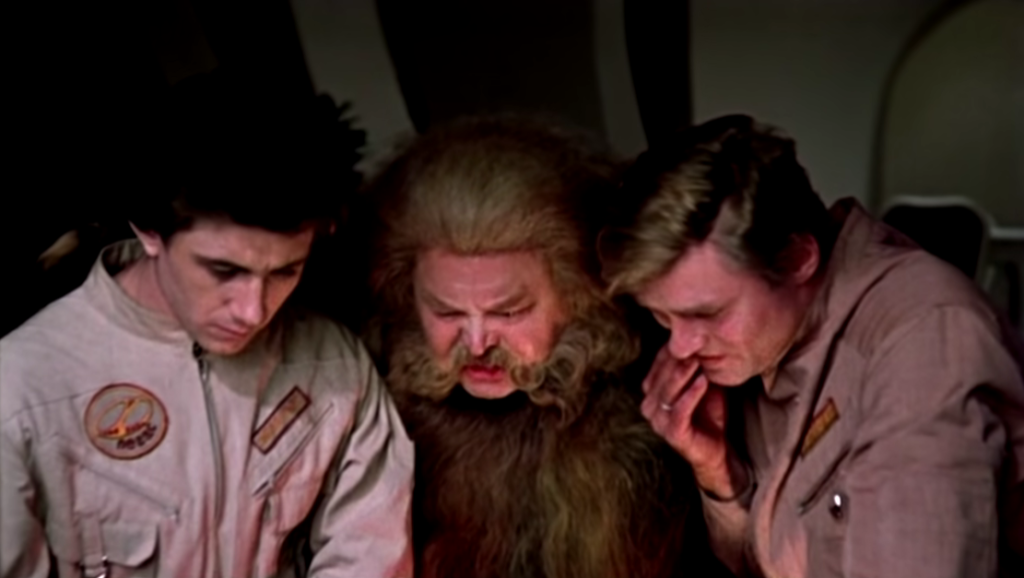
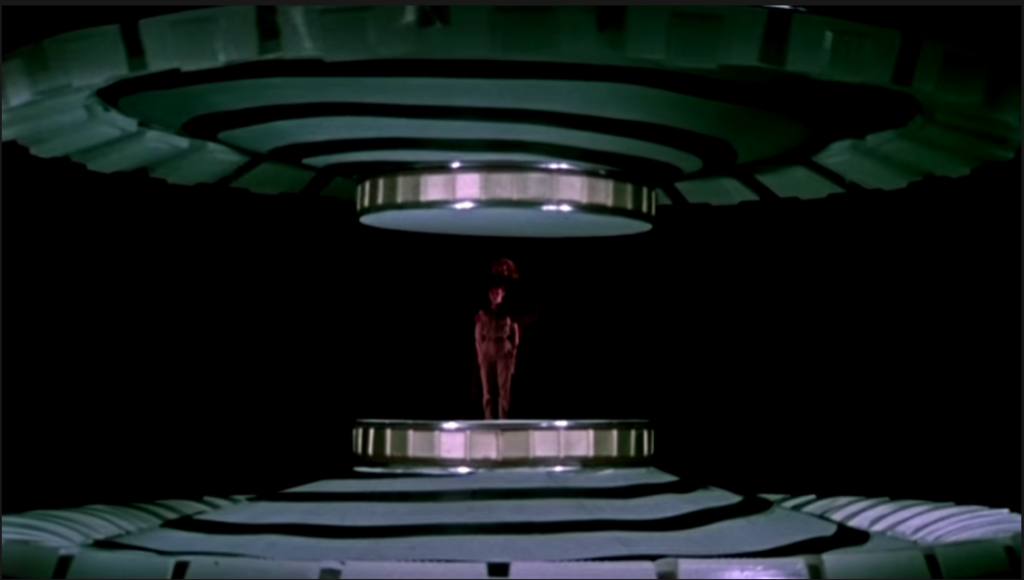
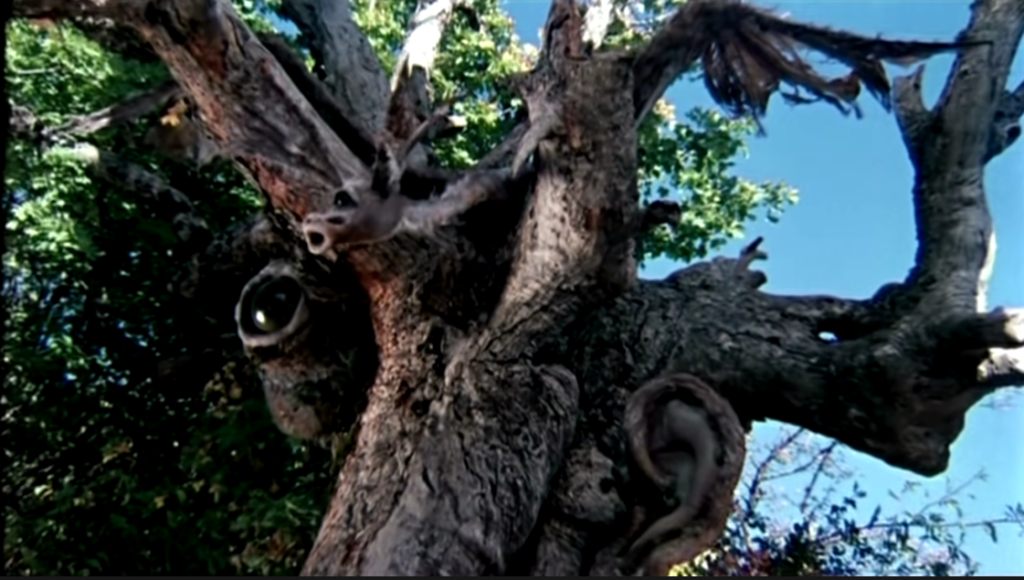
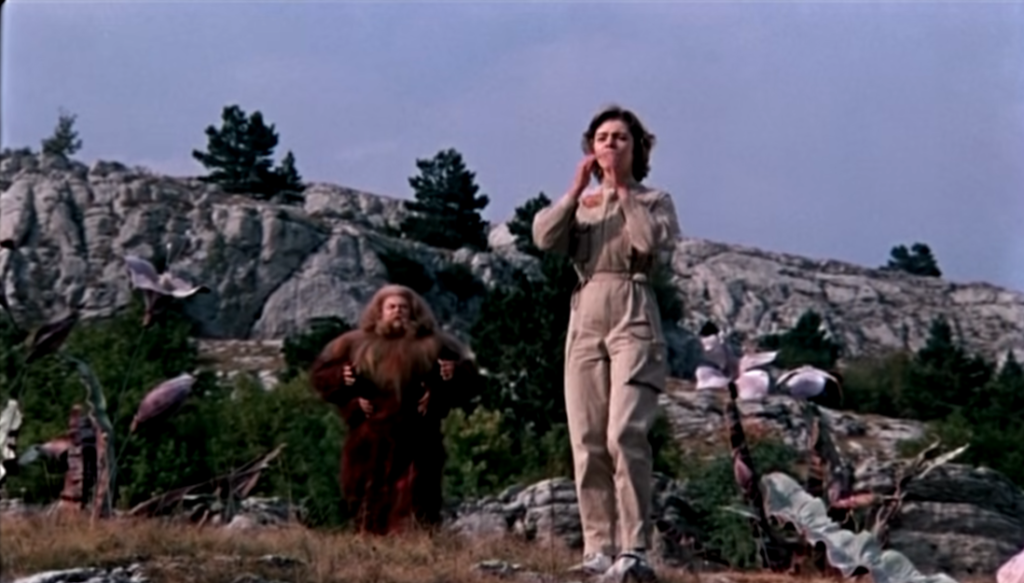
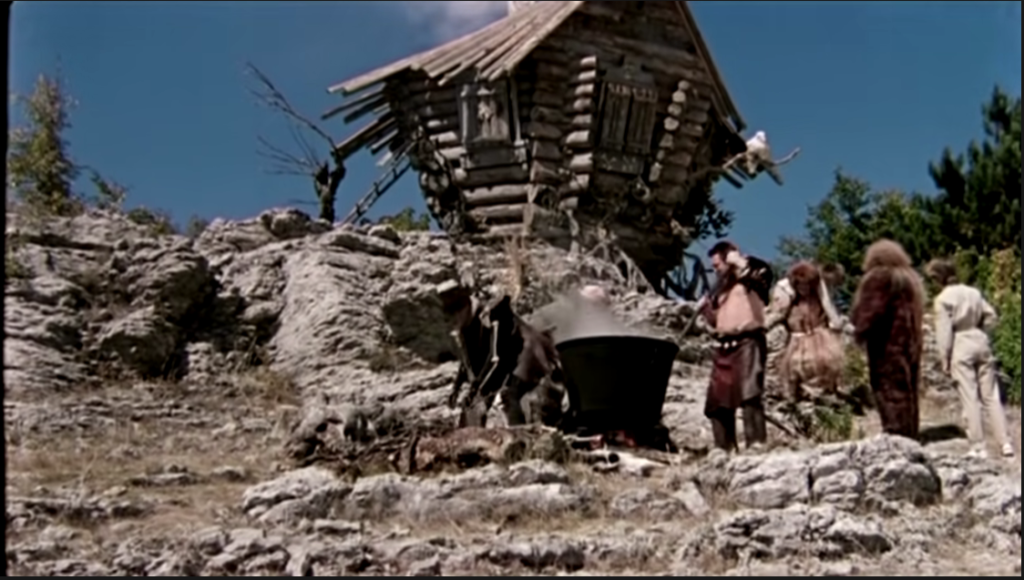
Lilac Ball (1987)
Film review #501
Director: Pavel Arsenov
SYNOPSIS: Travelling aboard their spaceship Pegasus, Professor Selznyova, his daughter Alisa and the rest of the crew encounter Selznyova’s old friend Gromozeka. He explains that he has come from a planet where the population has just been wiped out by a virus that has lain dormant for 26,000 years. The problem is that the same virus was also left on earth, and will activate and wipe out the population in a matter of days unless a cure can be found…
THOUGHTS/ANALYSIS: Lilac Ball is a 1987 children’s sci-fi film based on the novel by Kir Bulychyov. The story starts out aboard the spaceship Pegasus, manned by Professor Selznyova and his crew, including his daughter Alisa. On their travels, they come across the Professor’s friend Gromozeka, who tells them that a 26,000 year old dormant virus has just awakened and wiped out the entire population of a planet…and the same virus is on Earth and will activate in a few days time unless a cure can be found. The only solution is to send Alisa back in time to Earth 26,000 years ago to find the source of the virus. The most notable thing about the film is that it is pretty much an even split between science-fiction and fantasy: almost exactly at the halfway point, the spaceship and future gives way to an ancient Earth filled with fantasy creatures. With a runtime of seventy three minutes, the film certainly packs in a lot of stuff, combining that familiar soviet-era sci-fi aesthetic with some more offbeat fantasy creations. As a film aimed at children, it has to keep up a certain energy level to keep it entertaining, and I think it has plenty of imagination and variety to keep things interesting. The plot is quite packed as mentioned, and is a bit overwhelming to follow. Part of that might be the loose subtitles I watched the film with, and part of it is probably due to the fact that a lot of the original novel was cut to fit it into this fairly short runtime. Intricacies within the plot aren’t too problematic with children’s films though, as long as there’s plenty of jumping off points to spark their imaginations, which I think this film has.
Alisa is the main character of the film, and had appeared in the TV series Guest from the Future in 1984 before this film was made (and portrayed by the same actress). I believe that there is also a series of novels centred around her character, so she’s fairly well established, and it is refreshing to see a good female lead in these types of films. The rest of the characters serve a supporting role, and are a colourful bunch, again split between the more grounded characters in the sci-fi setting, and the fantasy half, where the characters are a bit more outlandish. The earth of 26,000 years ago is probably not very accurate, as there are talking birds, flying monsters, people in wooden houses and other such things which I do not think are historically accurate.
As mentioned, the sci-fi aesthetic feels very familiar if you have watched any other soviet-era sci-fi. The spaceship’s corridors and control panels have that typical look and feel of the time, but have a lot of detail and attention in them that is visually appealing. The spaceship itself is quite a unique design: it is a disc shape with retractable “sails” that resemble paper fans. The scenes with the spaceship flying around evading capture from this giant net…ship…thing is quite well done. I noticed the camera is a bit wobbly as it moved through the sets, which is a bit distracting. Moving into the more fantasy setting, the designs of the creatures reminds me very much of something out of The Neverending Story or Labyrinth, which makes me wonder if they inspired some of the decisions at any point. Lilac Ball has a bit of a dark edge like the aforementioned films, with a trio of comic relief characters being cannibals, and this rather disturbing death scene of this giant bird thing that we follow for about five minutes before it is killed on screen and we are left looking at it’s dying breath. Very odd. Some of the creatures aren’t quite as imaginative as in the novels, probably due to technical and budgetary constraints. Gromozeka is a humanoid-looking alien with four arms for example, but in the original novels, he was much more alien looking, with seven eyes and such. A 2009 partial-remake of this film that, due to it being animated, was able to be much more creative with it’s designs (it even had Alisa’s actress from this film returning to voice Alisa’s mother, which is nice).
Overall, Lilac Ball is an odd combination of science-fiction and fantasy that isn’t really a combination: the film is evenly split between the two. trying to fit these two genres, and a full novel’s worth of plot into such a short runtime creates a story that can be difficult to follow. The film constantly feels like it’s being constrained by one thing or another, but there’s plenty of things going on to keep it entertaining for children, it’s just a shame there’s not enough time or space given to appreciate them.
-
#494 – The Apostate (1987)
The Apostate (1987)
Film review #494
Director: Valeri Rubinchik
SYNOPSIS: Miller, a physics professor, manages to create a device that can clone human beings. When the government learn of it, they want Miller to turn over the machine for their own uses. Miller also gets caught up in a conflict with his own clone, as the two lead similar, yet different lives, and come to different conclusions about what to do with their similar, yet different lives…
THOUGHTS/ANALYSIS: The Apostate is a 1987 science-fiction film based on the novel Five Presidents by Pavel Bagryak. The film opens up with Professor Miller, a physics professor at a university, visiting the President of a certain country: Miller has invented a method of cloning humans, and the government wants him to turn it over to them so they can use it for probably military purposes and such. The film revolves around Miller, as people try and get to him and his secrets, and also his clones, who lead the same, but different lives. The aim of the film is to explore the implications of cloning technology, and all the ethical conundrums that emerge from it. It’s all mostly stuff you’d expect to be explored, but it does it with a fair amount of depth and explanation. The structure of the film is a bit odd: almost self-contained scenes are separated by long interludes of imagery and music. As such, the flow of the story is rather disjointed and doesn’t really tie into a flowing narrative, which is odd seeing as it is based on a novel. The different scenes thus serve as dialogues about the various implications of cloning and the possibilities that come with it. As such, it becomes quite easy to get lost with regards to what is happening.
The aspect of the film which holds it together more than any other is the interactions between Miller and his clone: they both have the same memories, but their lives begin to diverge as they get involved with different people and such. Miller and his clone(s) are portrayed by the same actor, so the scenes involving them are carefully shot so that only one of them is completely visible at any one time. The fact that the two diverge in appearance (hair styles, glasses etc.) as the film goes on is also a nice touch that emphasises that divergence in their lives, and that while they may be identical, they are also now different. The rest of the cast doesn’t really stand out in any significant way, but I guess they don’t really need to. All of Miller’s clones moving about and some of them getting killed really does make the film even more confusing, but again the overarching plot doesn’t really seem to be the focus of the film.
With a runtime of nearly two and a half hours, the film takes it’s time in exploring it’s subject matter. The interluding scenes that bridge the dialogue scenes focus on vast landscape views, and often violent weather and associated destruction accompanied to classical music; which stirs up the feeling of nature responding to the cloning being itself a rebelling of nature, which is cool, but I’m not sure that’s the aim, and if it is it could have been done much more explicitly to good effect. As mentioned, the scenes where Miller and his clone are present are carefully shot so that the same actor can play both parts, and this is pretty well pulled off, and doesn’t feel forced. The rest of the cinematography too is pretty solid, from scenes that pan across large settings, to transitions between different parts of buildings, the camera work is fluid and competent. Overall, I don’t think The Apostate offers anything new to the discussion and implications of cloning, but it approaches the subject with clarity, while also plunging it’s depths too. The disjointed story does not lend itself to the traditional cinematic structure, and it’s very easy to get lost in the film’s wanderings. It’s probably not got anything unique enough to be worth a watch, unless you’re big into soviet cinema, and how it might take on the idea of cloning.
-
358 – BraveStarr: The Movie (1987)
BraveStarr The Movie (1987)
Film review #358
Director: Tom Tataranowicz
SYNOPSIS: On the colony planet of New Texas, the evil demon Stampede and his henchman Tex Hex have assembled a gang of outlaws and villains to take control of the planet’s rich supply of the valuable mineral kerium. The inhabitants request help from the Galactic Marshals, the peacekeepers of the galaxy, but are less than impressed when only a single Marshal named BraveStarr and a new judge arrive, the residents are less than impressed, and BraveStarr must prove himself by defeating Tex Hex and also fulfilling his destiny…
THOUGHTS/ANALYSIS: BraveStarr the Movie (also known as BraveStarr the Legend) is a 1987 sci-fi animated film. The film is an extension of the BraveStarrcartoon series, but tells the origin of all the characters and how they met. The story begins with a Shaman telling the story of an evil creature known as Stampede and his plans to conquer the galaxy by mining the mineral Kerium, which is essential to space travel, on the planet of New Texas. He enslaves a rogue space mercenary called Tex Hex and grants him new powers to terrorise the planet. The shaman is unable to defeat Stampede, and when his ship is about to crash land on New Texas, he sends his young protege out in an escape pod with the promise that they will meet again and fulfil their destiny to banish Stampede. The way the story is told as a narration does go on a bit too long, and prevents the viewer from getting fully immersed in the story when it’s just being told to them rather than it playing out as it happens. This happens again about a third of the way through, and it just feels like the film takes a while to get into the action. It does take its time to establish the backstory, since the purpose of this film is intended to explain the origins of the characters and settings of the cartoon series, but even then the specific details are a little vague. Maybe the cartoon series fills in some of the gaps, but having never watched it, I cannot judged. When the film eventually does get going, it’s entertaining enough for kids, with plenty of action, colourful characters and a unique setting to enjoy. Nevertheless, it does try to push the envelope a little, and it feels a little darker and more menacing than other cartoons of the time, being set on this hostile world plagued with nasty looking villains who create a genuine sense of terror.
The titular character BraveStarr is an interesting character in terms of his design: he is a native american who is also a cowboy (space cowboy anyway…). The two roles are often placed in opposition, so it’s interesting to see a synthesis of these two tropes, and especially seeing a native American character in the lead role was practically unheard of (and is still quite rare). I think as a character that synthesises the two roles it allows children to see the role of native Americans as the heroes for a change. Whether he is an accurate or authentic depiction of native Americans is perhaps a more nuanced discussion, but honestly, as a kid’s show, it’s a good opportunity to introduce children to a more diverse set of heroes. The rest of the characters are also a varied bunch, with the main villain Stampede being a gruesome bull/skeleton hybrid, his henchman Tex Hex being a more typical cowboy villain, and a whole host of varied villains with different powers. Thirty-Thirty, BraveStarr’s part horse, part sidekick/partner is an interesting dual role character too, and his short temper and cavalier attitude give him some fun action sequences as well as some funny dialogue. Judge J.B. as the only female character also has a strong personality and exerts just as much authority as BraveStarr most of the time, as well as occasionally putting him in his place. then you have the native inhabitants of New Texas, a race of mole-people including Fuzz, who serve as the cutesy mascot characters. It all adds up to a large cast with some interesting and original characters for children to imagine in all sorts of adventures. Let’s be honest though, such a large cast is primarily aimed at selling lots of toys of all of these characters (the toys actually released before the cartoon so you can see where the priorities were).
The animation for BraveStarr isn’t especially great, but it’s okay for it’s time, and is consistent with the other cartoons that Filmation put out (He-Man, G.I. Joeetc.). The music however is pretty good, with an orchestral, epic feel that heightens the tension and the stakes. BraveStarr overall doesn’t stand out too much from the cartoons made to push merchandise that were rife in the 1980′s, but if you look a little deeper, you find an interesting and unique world populated with some similarly interesting characters, including the titular character. As a standalone film it is a fairly standard depiction of good vs evil, using the cowboy tropes and giving them a sci-fi twist. As a kid’s film it doesn’t really need to be much more than that. Some scenes (particularly the narrated ones) go on for too long and may not sustain younger viewers attention, but there’s also plenty of action and variety in the characters to rescue it. You don’t have to have watched the series to maker sense of the film (as I haven’t), but undoubtedly learning the origins of these characters would make it more rewarding. I don’t think films like this need to be anymore complicated than what is done here: they’re designed to sell toys, and this essentially provides a springboard for children’s imagination to make their own stories to play with said toys, so in this sense I can happily accept BraveStarr the Movie as it is, despite some flaws and a lack of appeal and originality for more mature audiences.
